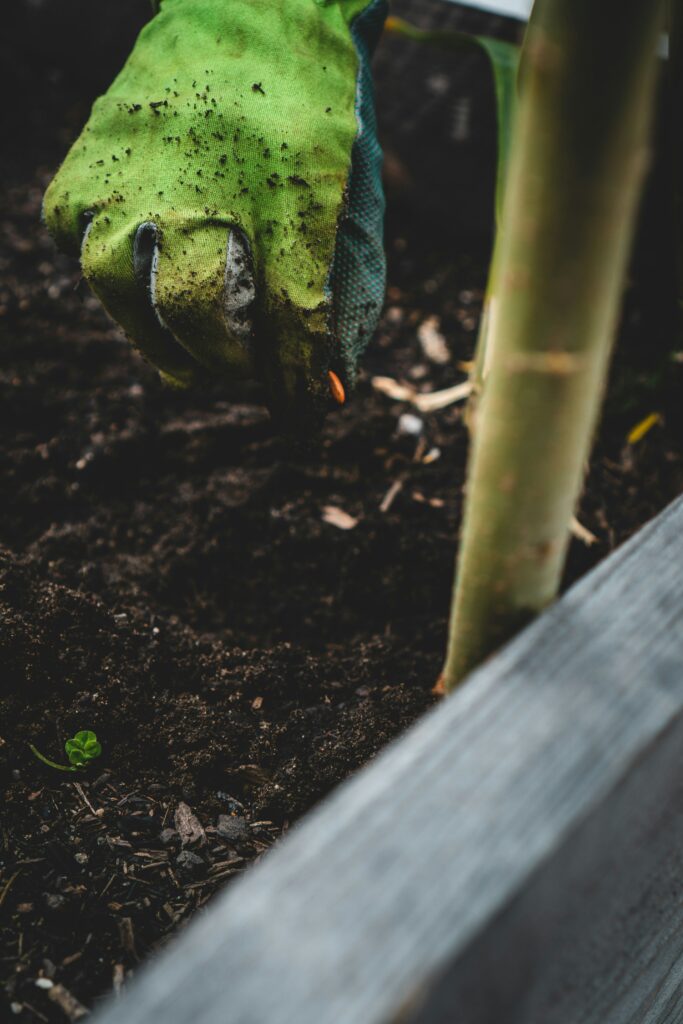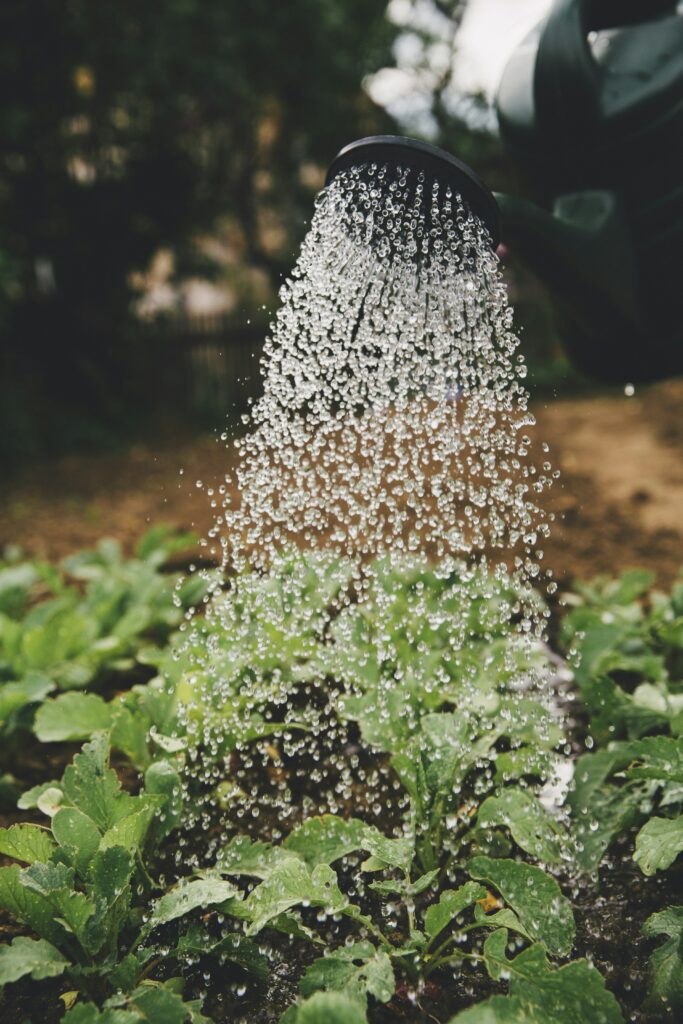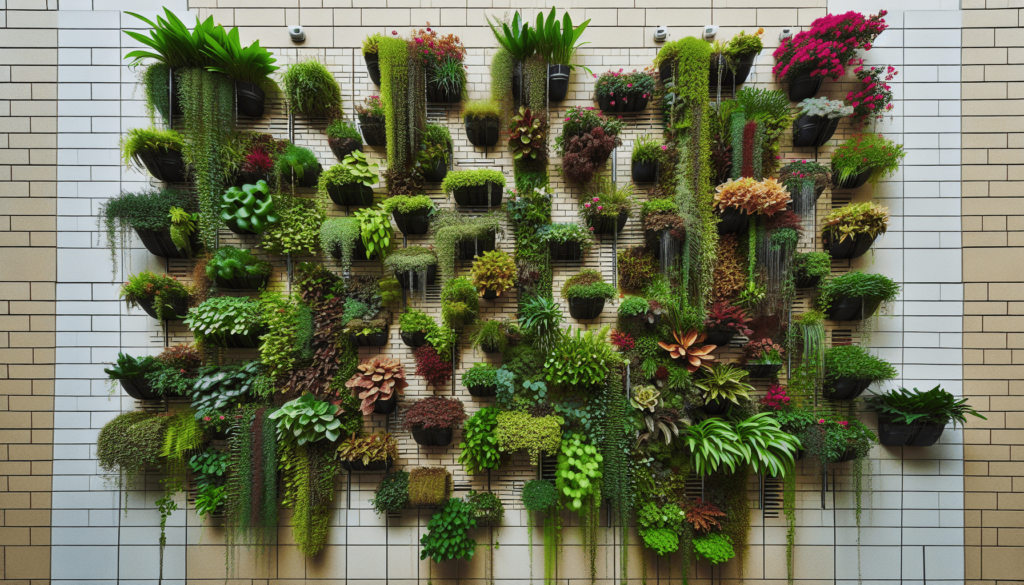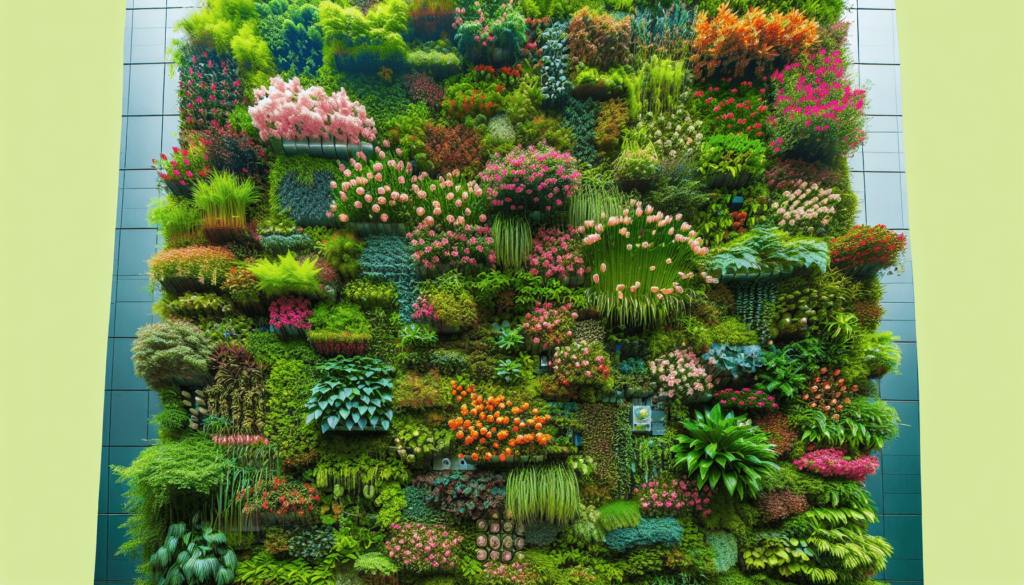Disclosure: As participants in the Amazon Associates Program, we earn from qualifying purchases. This means when you click on an Amazon link on this page and make a purchase, we receive a commission. This doesn’t affect the price you pay but it does help us to keep producing the content you love to see. We always aim for honesty and transparency in everything we do, and your support means the world to us. Thank you for helping us grow and for being part of our community.
Welcome to your ultimate resource for all things related to vertical garden kits. Our platform is designed to demystify the vertical gardening process and help you successfully create your own lush, vertical oasis. Our comprehensive FAQ section offers answers to the myriad questions that both budding and seasoned gardeners might have about vertical gardening. Whether you’re pondering the basics or diving into more complex inquiries, our FAQs have got you covered. We understand that vertical gardening presents a unique set of challenges and opportunities. From solving common problems to offering creative tips for maximizing your vertical space, our aim is to empower you with the knowledge to thrive in your vertical gardening endeavors. Join our growing community of vertical gardening enthusiasts and explore our FAQ section for the answers you seek. Vertical gardening offers a unique and innovative way to cultivate plants in limited spaces. However, like any form of gardening, it comes with its own set of challenges that need to be addressed for successful and thriving green walls. From choosing the right location to selecting suitable plants and providing adequate care, here are some of the challenges you may encounter in vertical gardening and how to overcome them.

This image is property of images.unsplash.com.
Considering Sunlight Exposure
One crucial factor to consider when setting up a vertical garden is the amount of sunlight the chosen location receives. Different plants have varying light requirements, so it’s important to assess the sun exposure of your space before selecting plants. If your vertical garden receives full sun all day long, you can opt for sun-loving plants like succulents, herbs, or vegetables. On the other hand, if your space is shaded for most of the day, shade-tolerant plants such as ferns or mosses would be a better choice. Understanding the sunlight levels will help ensure that your plants can thrive and grow even in a vertical environment.
Structural Support and Weight
Another challenge to address when setting up a vertical garden is the structural support and weight-bearing capacity of the intended location. Vertical gardens can be heavy, especially when fully grown and filled with plants and moist soil. It’s crucial to ensure that the chosen structure, whether it’s a wall, trellis, or a freestanding system, can support the weight of the vertical garden. Consult with a professional if needed to determine the load-bearing capacity of your chosen location and properly reinforce the structure, if necessary. This will prevent any structural damage and ensure the longevity of your vertical garden.
Accessibility for Maintenance
Maintenance is an essential aspect of vertical gardening, and easy accessibility to your plants is crucial. Before setting up your vertical garden, consider how you will reach and maintain your plants regularly. If your vertical garden is high up or installed on a wall, you may need to use a ladder or step stool to comfortably access all parts of the garden. Alternatively, if your vertical garden is easily accessible at eye level, maintenance tasks such as watering, pruning, and harvesting become much more convenient. Ensuring easy access will make it easier for you to care for your plants, promoting their overall health and longevity.
Understanding Plant Size and Weight
When selecting plants for vertical gardening, it’s important to consider their size and weight. Some plants, such as vines or trailing plants, are naturally suited for vertical growth as they can climb or hang down. These plants are often lightweight and won’t put excessive strain on the structure. However, larger plants or those that have a bushy growth habit may require additional support and reinforcement to prevent them from sagging or tipping over. Understanding the growth habits and weight of your chosen plants will help you provide the necessary support and ensure the stability of your vertical garden.

This image is property of images.unsplash.com.
Considering Watering Needs
Vertical gardens have unique watering requirements, as water needs to be distributed efficiently throughout the entire vertical system. One challenge is making sure all the plants receive adequate moisture without causing water runoff or leakage. It’s important to choose a watering system that suits your vertical garden setup, such as drip irrigation or a misting system. These systems allow for precise and controlled watering, preventing excess water from pooling at the base of the garden. Additionally, regularly checking the moisture levels in the soil and adjusting watering frequency accordingly will ensure that your plants stay properly hydrated.
Choosing Plants that Thrive in Vertical Conditions
Vertical gardening presents a different environment for plants compared to traditional gardens. Therefore, it’s important to choose plants that are well-suited for vertical conditions. Look for plants that are known to thrive in confined spaces, have the ability to adapt to limited root space, and can tolerate the sometimes challenging microenvironment of a vertical garden. Some plants that are commonly used in vertical gardens include ferns, pothos, philodendrons, and herbs like basil and mint. Researching and selecting plants that have a proven track record of success in vertical gardens will increase the likelihood of your plants flourishing in their new environment.
Addressing the Issue of Water Distribution
Efficient water distribution is a crucial aspect of vertical gardening. Ensuring that water reaches all plants evenly can be a challenge, especially in larger vertical gardens. When setting up your vertical garden, consider how water will flow and be distributed throughout the system. Installing a watering system that allows for proper coverage, such as a drip irrigation system or a series of perforated pipes, will help ensure that every plant receives adequate hydration. Periodically check the distribution system to ensure it is functioning properly and adjust as needed to optimize water distribution.
Preventing Water Runoff and Leakage
Water runoff and leakage can be problematic not only for the health of your plants but also for the structural integrity of your vertical garden. To prevent water runoff, ensure that your vertical garden has proper drainage systems in place. This may include using well-draining soil, providing drainage holes or trays at the base of each planting pocket, or incorporating a reservoir system that collects excess water and recirculates it back to the plants. Avoid over-watering your plants, as this can lead to water pooling or leakage. Regularly monitor the moisture levels of your plants and adjust your watering routine accordingly to prevent water-related issues.

This image is property of images.unsplash.com.
Ensuring Proper Drainage to Avoid Waterlogging
Waterlogging can be detrimental to the health of your plants as it deprives the roots of oxygen and can lead to root rot. Proper drainage is essential to avoid waterlogging in your vertical garden. Ensure that your chosen planting pockets or containers have adequate drainage holes to allow excess water to flow out. Additionally, using a well-draining potting mix that allows water to percolate through easily will help prevent the accumulation of water. Regularly check the drainage system of your vertical garden and take necessary steps to unclog any blockages. Maintaining proper drainage will promote healthy root development and prevent water-related issues.
Finding the Right Soil Composition
The right soil composition is crucial for the success of your vertical garden. The type of soil you use should promote proper root growth, provide adequate nutrients, and ensure sufficient water retention without becoming waterlogged. A well-draining soil mix that consists of organic matter, perlite, vermiculite, and sand is often recommended for vertical gardens. This type of soil composition allows for proper aeration and water drainage while still retaining enough moisture to sustain plant growth. Avoid using dense or clay-heavy soils, as they can lead to poor drainage and hinder root growth. Experiment with different soil compositions and observe how your plants respond to find the ideal mix for your vertical garden.
Addressing Nutrient Depletion
Vertical gardens, like any other garden, require regular nutrient replenishment to support healthy plant growth. One challenge in vertical gardening is the potential for nutrient depletion due to the limited soil volume. The constant watering and frequent leaching of nutrients can result in nutrient deficiencies over time. To address this challenge, consider incorporating slow-release fertilizers into your soil mix or applying liquid fertilizers regularly. Monitoring the nutrient levels of your plants and adjusting your fertilization routine as needed will help prevent nutrient deficiencies and promote robust growth in your vertical garden.
Managing pH Levels
Maintaining the correct pH level is essential for nutrient uptake and overall plant health. Different plants have varying pH requirements, so it’s important to monitor and adjust the pH levels of your vertical garden accordingly. Most plants prefer a slightly acidic to neutral pH range. Conduct regular soil tests to determine the pH level of your soil and make necessary adjustments. If your soil is too acidic, you can add lime to raise the pH, while sulfur can be added to lower it if it’s too alkaline. Regular monitoring and adjusting of pH levels will ensure that your plants have optimal conditions for nutrient absorption and growth.

Preventing Pests from Accessing Your Vertical Garden
Pest prevention is important in any garden, and vertical gardens are no exception. One challenge in vertical gardening is preventing pests from accessing and infesting your plants. The vertical structure itself can make it more difficult for certain pests to reach your plants, but it’s still important to implement preventive measures. Inspect your vertical garden regularly for signs of pests such as aphids, mealybugs, or spider mites. Natural pest control methods, such as introducing beneficial insects or using homemade insecticidal soaps, can help keep pests at bay. Additionally, maintaining good garden hygiene by removing any dead or diseased plants promptly will help prevent pest infestations.
Implementing Natural Pest Control Methods
When it comes to pest control in your vertical garden, implementing natural and organic methods is highly recommended. Chemical pesticides can harm beneficial insects and upset the balance of your vertical ecosystem. Instead, opt for natural pest control methods that are safe for both your plants and the environment. For example, introducing ladybugs, lacewings, or praying mantises can help control aphids, thrips, and other small pests. Homemade insecticidal sprays made from ingredients such as neem oil or dish soap can also be effective against soft-bodied insects. Regularly monitoring your plants for any signs of pests and promptly addressing them using natural methods will help maintain a healthy and pest-free vertical garden.
Identifying and Treating Common Plant Diseases
Like any garden, vertical gardens are susceptible to plant diseases. Recognizing the signs of common plant diseases is important for early detection and treatment. Leaf spots, powdery mildew, and root rot are just a few examples of diseases that can affect your plants. Regularly inspecting your plants for any signs of disease, such as discolored leaves, unusual growth, or wilting, will help you identify and address issues promptly. Treatments can vary depending on the specific disease, but using organic fungicides or removing affected plant parts can often help control the spread of diseases. Maintaining good garden hygiene, proper watering practices, and providing adequate air circulation will also help prevent the onset of plant diseases in your vertical garden.
Regularly Checking and Reinforcing Vertical Supports
Proper support and structure are crucial for the stability and longevity of your vertical garden. Over time, plants can grow and become heavier, potentially straining the supports. Therefore, regular checking and reinforcing of the vertical supports are necessary. Inspect the structure of your vertical garden periodically to ensure that it is secure and stable. Tighten any loose screws or bolts, and replace any damaged components if needed. Reinforce the supporting structure as necessary to accommodate the growing plants. Regular maintenance and reinforcement will help prevent any accidents and ensure the safety and stability of your vertical garden.

Monitoring and Adjusting Plant Growth
Vertical gardening requires monitoring and adjusting plant growth to ensure that plants are growing in the desired manner. Some plants may grow vigorously and start overcrowding the vertical space, leading to competition for resources and hindering the overall health of the garden. Regularly monitor plant growth and adjust as needed by pruning or training the plants. Pruning techniques for vertical growth may involve removing damaged or overgrown branches or redirecting the growth to encourage a more compact shape. Adjusting the growth of your plants will help maintain the aesthetics of your vertical garden while promoting better air circulation and overall plant health.
Managing Overcrowding
In vertical gardening, space is often limited, and overcrowding can become a problem if left unchecked. Overcrowded plants can lead to stunted growth, poor air circulation, and increased risk of disease and pest infestations. Regularly assess the growth of your plants and thin out any overcrowded areas. This may involve removing or transplanting excess plants to other locations or providing additional support to prevent sagging or toppling over. Managing overcrowding will help each plant have sufficient space, light, and resources for optimal growth and ensure a visually appealing and healthy vertical garden.
Adapting Pruning Techniques to Vertical Growth
Pruning is an essential maintenance task in vertical gardening to promote plant health and maintain a neat appearance. However, pruning techniques need to be adapted to accommodate vertical growth. When pruning plants in a vertical garden, consider how the growth habit of the plant may differ from conventional horizontal growth. Trim any wayward or overcrowded branches to maintain a tidy shape and prevent the plant from tangling or leaning too far from the support structure. Avoid excessive pruning that may hinder the plant’s ability to produce energy through photosynthesis, as this can lead to weaker growth. Adapting pruning techniques to vertical growth will help maintain the health and aesthetics of your plants.
Ensuring Accessibility for Harvesting
Vertical gardening can also be a source of fresh produce, herbs, or flowers. However, ensuring accessibility for harvesting can be a challenge in some vertical garden setups. When selecting plants for your vertical garden, consider their maturation times and how easy it will be to reach and harvest the produce. Plants with fruits or vegetables that can be easily accessed at eye level or with minimal bending or reaching are ideal for vertical gardens. This will make the harvesting process more enjoyable and convenient. Consider incorporating shelves or platforms at suitable heights to provide easier access to your plants, allowing you to enjoy the fruits of your labor.
Maintaining Plant Shape and Health
Maintaining the shape and health of your vertical garden is important for an aesthetically pleasing and thriving green space. Regularly inspect your plants for any signs of damage, disease, or pest infestations. Promptly address any issues by removing affected plant parts or treating diseases naturally. Additionally, monitor the growth of your plants and adjust as needed through pruning or training techniques. Ensuring that your plants receive adequate sunlight, water, and nutrients will help maintain their overall health and promote vibrant growth. Regular maintenance and care will preserve the shape and appearance of your vertical garden, providing you with a beautiful and enjoyable green oasis.
Maximizing Vertical Growing Area
Limited space can be a challenge in vertical gardening, but with the right approach, you can maximize the vertical growing area. Consider utilizing every available surface, including walls, fences, balconies, and small horizontal spaces, to create a multi-dimensional vertical garden. Use trellises, hanging baskets, or modular vertical garden systems to add additional planting space. Incorporate vertical structures that can support climbing or trailing plants, effectively increasing the surface area for planting. By maximizing the vertical growing area, you can grow a greater variety of plants and create a lusher and more diverse vertical garden.
Determining Optimal Planting Density
Finding the right balance in planting density is important for ensuring that each plant has enough space and resources to grow and thrive. Crowded plants can compete for sunlight, nutrients, and water, which can lead to stunted growth and increased susceptibility to pests and diseases. On the other hand, spacing plants too far apart can result in wasted vertical growing area. Determine the optimal planting density for your vertical garden based on the growth habits and space requirements of your chosen plants. Research the recommended spacing guidelines for each plant and adjust accordingly to provide the best growing conditions for your plants.
Managing Competition for Resources
Limited resources in a vertical garden can lead to competition among plants. Water, sunlight, and nutrients need to be efficiently distributed to ensure that each plant receives its fair share. One way to manage competition for resources is by selecting plants that have similar water and nutrient requirements. Additionally, implementing an efficient watering and fertilization system, such as drip irrigation and slow-release fertilizers, can help ensure that resources are distributed evenly. Regularly monitor the health and growth of your plants, and adjust resource allocation as needed to address any imbalances. Managing competition for resources will promote equal growth and reduce the risk of any plants outcompeting or overshadowing others.
Preventing Shade and Stagnant Air
In a vertical garden, ensuring adequate light and airflow is crucial for the health of your plants. Shade caused by nearby structures or adjacent plants can have a negative impact on plant growth. Regularly evaluate the positioning of your vertical garden and monitor any changes in shade patterns throughout the day or year. Adjust the position or orientation of your vertical garden as needed to maximize sunlight exposure. Stagnant air can also be a challenge in vertical gardening, as airflow may be limited in tight spaces. Consider using fans or incorporating open areas into your vertical garden design to promote natural air movement. Preventing shade and stagnant air will help create a healthy and vibrant growing environment for your plants.
Adjusting Vertical Structures for Light Distribution
Proper light distribution is essential for the overall health and growth of your plants in a vertical garden. Plants positioned too closely to the supporting structure may receive less light, leading to uneven growth or leggy plants. Adjusting the vertical structures within your garden can help optimize light distribution. This may involve adding reflective surfaces, installing adjustable shelves, or incorporating pivoting or rotating mechanisms for certain planters. By adjusting the vertical structures, you can ensure that each plant receives adequate light from all angles, promoting more balanced and uniform growth across your vertical garden.
Promoting Natural Airflow
Good airflow is important in a vertical garden to prevent the buildup of excessive humidity and reduce the risk of fungal diseases. Stagnant air can create a favorable environment for pests and diseases. To promote natural airflow, strategically position your vertical garden in an area that allows for air movement. Leave sufficient gaps between plants or planters to allow air to circulate. Incorporate open areas within your vertical garden design to allow air to flow freely. Regularly remove any dead or decaying vegetation, as this can decrease airflow and contribute to the growth of mold or fungi. By promoting natural airflow, you create a healthier environment for your plants and reduce the risk of various plant issues.
Providing Sufficient Space for Root Development
Root growth is crucial for the health and stability of plants in a vertical garden. Limited root space can inhibit root development and lead to stunted growth. Providing sufficient space for root development is crucial for the success of your vertical garden. Consider the growth habits and the root systems of your chosen plants when selecting pots or containers. Choose containers that offer enough depth and space for the plants’ roots to spread out comfortably. Regularly inspect the root systems of your plants and transplant them to larger containers if they become root-bound. Ensuring sufficient space for root development will promote healthy plant growth and overall plant health.
Addressing Soil Compaction
Soil compaction can occur over time in a vertical garden, hindering root growth and preventing proper water drainage. Compacted soil can reduce the amount of air and water that reaches the roots, leading to poor plant health. Regularly address soil compaction in your vertical garden by loosening the soil with a garden fork or by using mechanical aerators. Gently work the soil around the roots, being careful not to damage them. Incorporating organic matter into the soil can also help improve its structure and prevent compaction. Maintaining loose and friable soil will encourage healthy root growth and ensure proper water and nutrient absorption.
Facilitating Water and Nutrient Absorption
An important challenge in vertical gardening is facilitating water and nutrient absorption in a limited root space. Maximizing the efficiency of water and nutrient absorption is crucial for promoting plant health and growth. Consider incorporating techniques and materials in your vertical garden that can enhance water and nutrient absorption. For example, adding organic matter such as compost or worm castings to the soil can improve its water-holding capacity and nutrient content. Mulching the surface of the soil can help retain moisture and protect against evaporation. Regularly monitor the moisture levels and nutrient content in your vertical garden and adjust as needed to ensure optimal absorption by the plant’s roots.
Vertical gardening offers a unique and rewarding way to bring greenery into small spaces. Overcoming the challenges of vertical gardening is essential for creating a thriving and aesthetically pleasing vertical garden. By considering sunlight exposure, providing suitable structural support, and ensuring accessibility for maintenance, you set your vertical garden up for success. Selecting suitable plants, addressing watering needs, and managing soil and nutrient requirements will help your plants flourish in the vertical environment. Implementing pest and disease control methods, maintaining proper support, and pruning and harvesting effectively will promote plant health and longevity. By addressing limitations in root growth, managing planting density, and ensuring light and air circulation, you optimize the growth and health of your vertical garden. With careful planning, regular maintenance, and attention to detail, you can overcome the challenges of vertical gardening and enjoy a vibrant and thriving vertical oasis in your own space.







